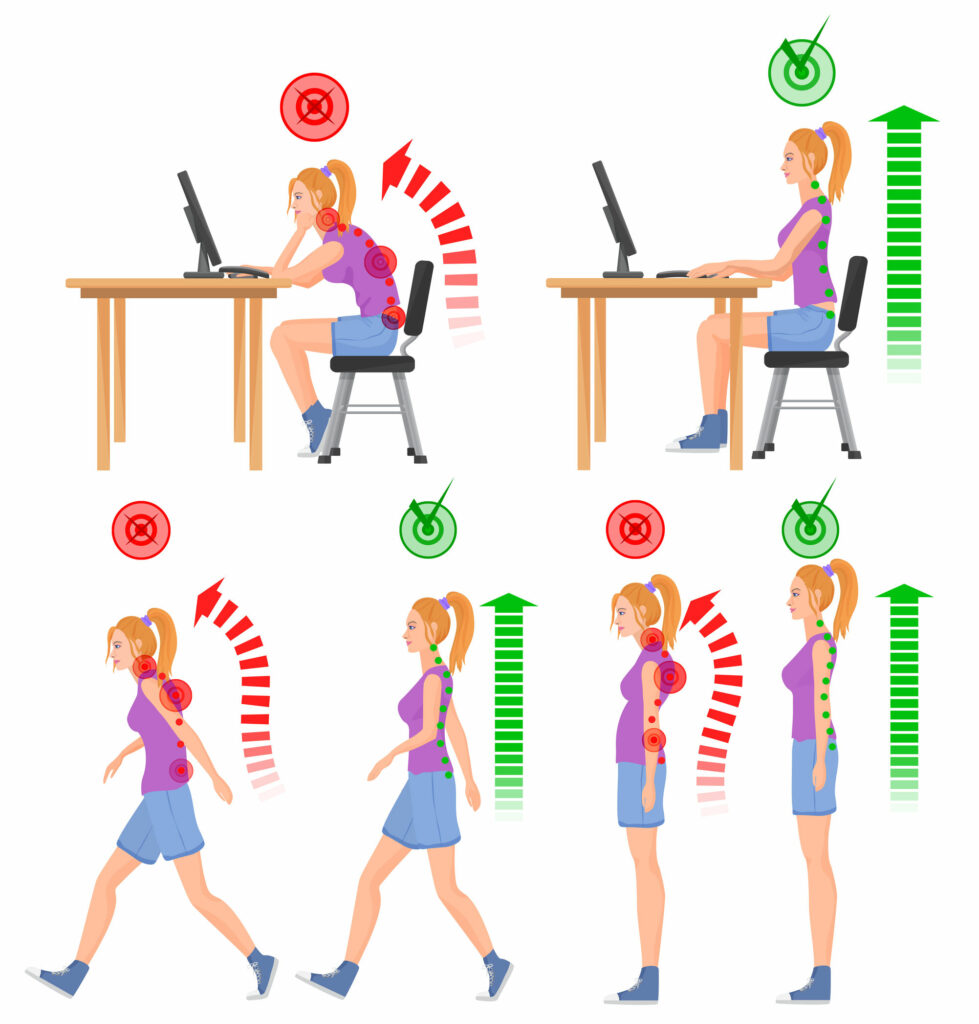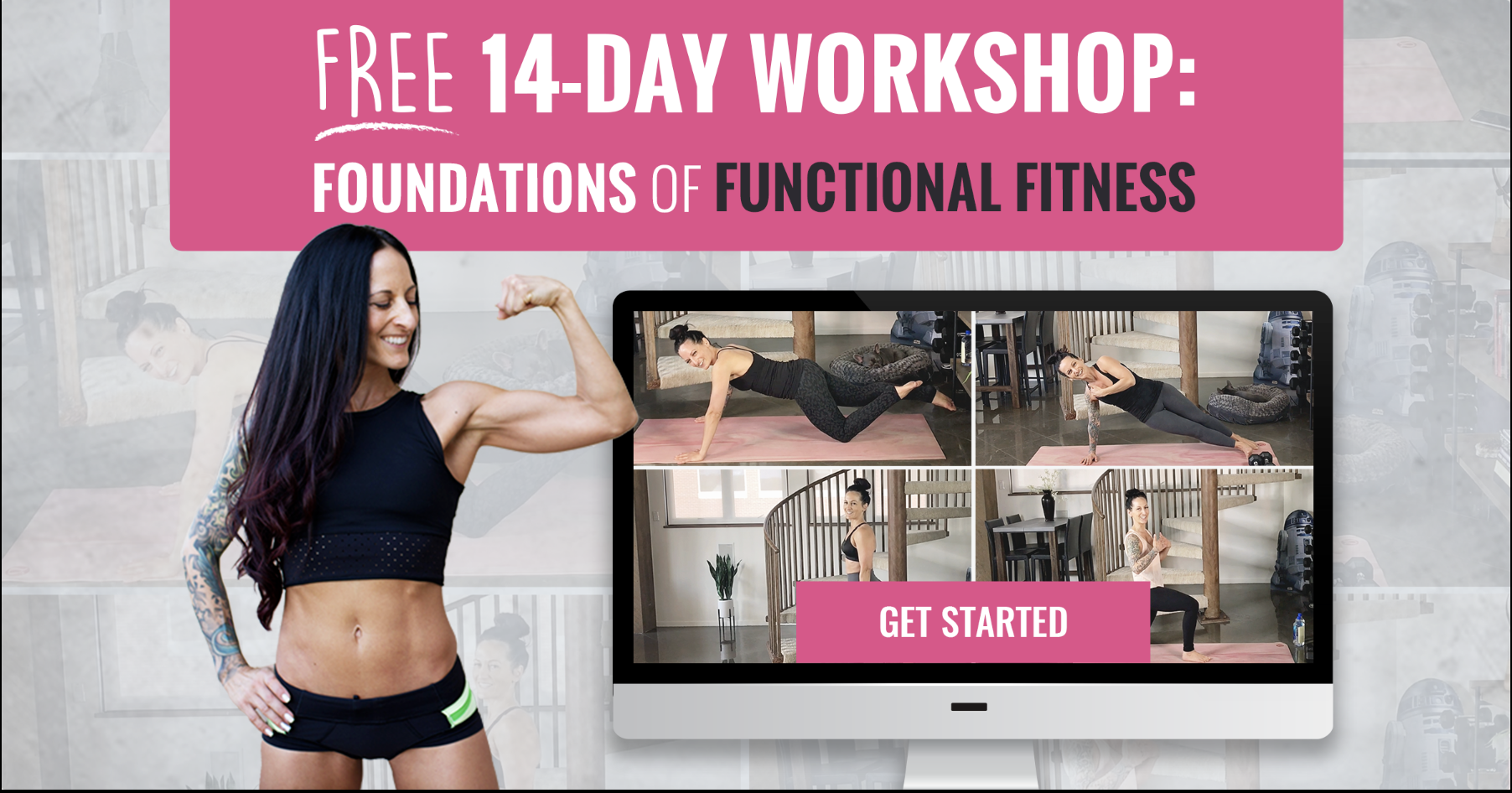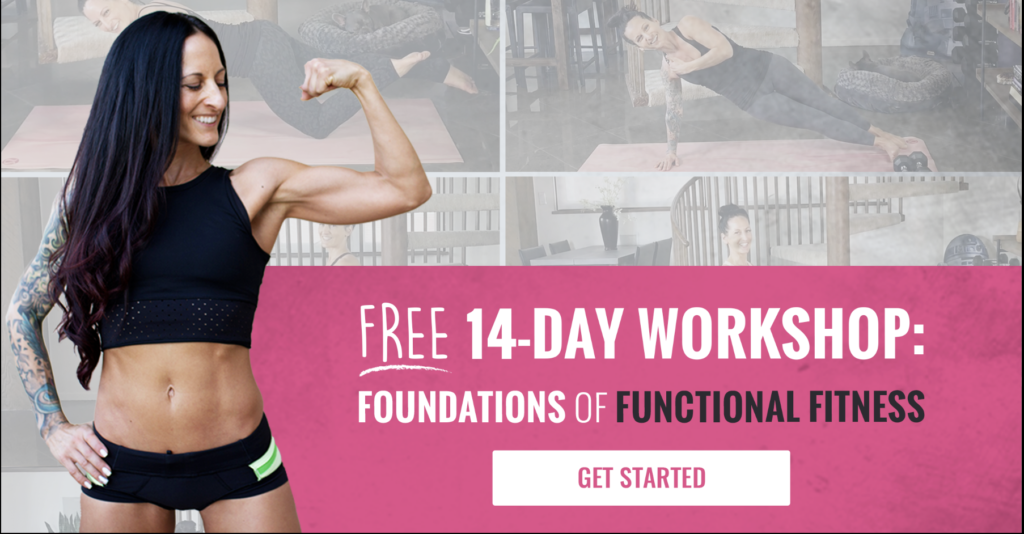
Intrinsically connected by tendons, your muscles attach to various bony landmarks, cross specific joints and define the form and structure you have below your skin. We can have an enormous influence on how these two systems interact by using our body awareness in our movements (and workouts) so we can get stronger safely and enjoy a balanced physique for years to come.
In my classes you’ll hear me stressing the importance of form during movement, and that’s because the alignment of your skeleton and the way you line yourself up when performing movement will determine not only how efficiently and effectively you call on the power of your muscles, but how well you can protect your joints.
In my previous career, I worked with athletes as a “structural integrationist,” practicing neuromuscular therapy, soft tissue release with techniques like trigger point therapy, myofascial release, corrective exercises and other forms of therapy that addressed postural imbalances and helped each individual develop more body awareness and better alignment.
I’ve brought a lot of that knowledge into my work as a trainer and when I write workout programs and teach classes, this is always on my mind.
I want to give you some foundation basics so you can think about your body the way I do, from that perspective of balance and alignment. Take my free 14-day Foundations of Functional Fitness Workshop for an awesome baseline of the knowledge I would teach you if we were working together one on one.
Our bodies were designed for function. Similar to a building, your body is made up of interlocking support structures that rely on the balance of each other to hold the whole thing together and allow for stressors (like resistance or impact) to be added.
When a muscle works, it contracts. Imagine your bicep doing a curl, every time you flex your arm, it contracts and activates. The woman on the left is doing a bicep curl. The muscle on the opposite side of your arm, your triceps, activates when you extend your arm back. You can perform triceps extensions in several positions – the woman on the right is doing an overhead tricep extension – when she presses the weight up, her arms straighten (extend) and that’s what works the triceps.
If you only did bicep curls when you worked out and never did triceps extensions, you would create an imbalance between the front and back of your arm. This would also create instability across the 2 joints the bicep and triceps cross over – your shoulder and elbow joints.
Balancing your training means you think about working muscles all the way around a joint.
This is just one example, but it’s easy to imagine how overdevelopment of one side of the body in specific muscles can actually pulls a joint out of alignment. In this case, if your biceps were overdeveloped, they could pull elbow joint into extension and the shoulder joint into forward rotation. You might be getting stuck in a position due to overuse at your job or sport, and not even realize it.
But what happens when your shoulder is not properly aligned going into these resistance activities – where you’re adding load (from the dumbbell in this case) hoping to strengthen your muscles? You can actually get injured training when you’re not properly aligned. Your quads and hamstrings are another example of this. Both attach to your pelvis, and cross over your knee. They do opposite actions, and when they become imbalanced, they can pull your pelvis forward or back, and impact the alignment of the knee.
Modern life subjects us to many misalignment issues, repetitive motion injuries and stress around joints that we don’t realize is happening until something starts to hurt. This is because in daily life, we don’t always use opposing muscles in a balanced way.
One of the common ways we get “misaligned” without realizing it is the repetitive daily activities that put us into postures that end up recruiting specific muscles over and over.
Often some muscles get overused, and others underused leading to strained backs, unsteady knees and other types of joint pain that over time can cause big problems. With awareness of this, you can begin to start training some of those underused muscles and bringing balance back into your body naturally.
Think about this: we see in front of ourselves and therefore most of the movements we make in our daily lives are in a forward direction.

There are specific muscles that work over and over in your daily activities that end up working more than their opposites – creating imbalances that can really impact your posture – and set you up to be training with poor form.
Think about how you sit at the computer, how you sit to eat, how you drive, that you walk and bicycle forward and on and on.
There is nothing wrong with any of the above activities – in fact, I want you to be able to enjoy every single one of them in abundance.
What I want you to notice is the similarity in each of those common postures – the neck is bent forward, the shoulders are rounded forward, and our back may be slightly slouched as we are in a seated position.
Over time repetitive motion takes its toll. We’ve all seen the propensity many elderly people have to lean forward, hunch over and have a head way forward from their center of gravity. This is because they have been using the SAME muscles so much without the balance of using the opposite muscles, their overworking muscles are literally pulling their bones forward.
What we may not realize is that most of us are part of the way towards that already. We don’t spend nearly as much time in our daily lives pulling things, leaning back, and standing up as we do working with your hands in front of us, leaning forward, and sitting down.
And this is one of the big contributing factors to upper back pain, neck pain and poor posture. While you may “feel pain” in your back if this imbalance describes you, the tightness is actually in the overworked chest and front body muscles. A workout that incorporates too many of these already overworked muscle groups is like adding insult to injury.
So what is the answer? How do we solve this problem without having to take medication for pain (which I personally think simply addresses the symptom, and doesn’t fix the problem)?
The simplest thing you can do RIGHT NOW is to become aware of your body postures and daily activity positions and notice where you’re doing repetitive tasks and sitting or working in similar positions over and over.

Think about sitting upright and engaging your core and back muscles while you’re sitting all day. Make sure you adjust your desk so the height allows your head to view the computer screen without having to tilt forward.

The next thing for many people is to focus on strengthening the muscles that aren’t activating as often. For many people, it’s about deliberately strengthening the back body muscles, and stretching the front body muscles more so you can bring the body into balance.
Here’s my posterior chain training series – you could do one of these workouts every week in the mix with your other training to help strengthen that backside of your body:
When you train for a specific activity you enjoy, consider cross training the muscles that you don’t use as much for your sport.
If you’re a cyclist, think about what muscles you use to perform that repetitive exercise day after day. It’s a lot more quad than it is hamstring. Do some exercises that engage your hamstrings on your days off. Unless you’re competing and under the care of a coach, I’d highly recommend you train for balance in your legs as well as performance in your rides. Your body will thank you in the long run.
If you’re a runner, consider cross training with deadlifts, lunges and squats – as well as core and upper body workouts to bring balance and strength to your entire body.
Sometimes you do need an outside resource like a trainer to watch your form, or a physical therapist to help you re-pattern imbalances in your musculoskeletal system. Don’t hesitate to resource yourself in this way if you’re experiencing pain or discomfort while training, and get someone to manually assess you and provide you with care and guidance. Doing this early can make the difference in how long and effectively you train.
The bottom line is that training on poorly balanced and poorly aligned joints will inevitably lead to injury. Train for balance, and strength will be inevitable.


